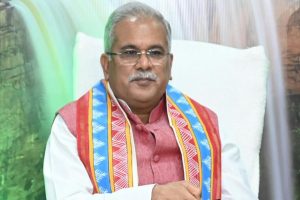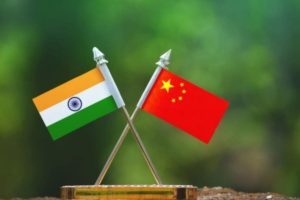Theaterization is well on its way. Recent announcements indicate that to some extent the services have compromised on their demands; right or wrong is a separate issue. Agniveers are now the order of the day as also is manpower reduction, all intended to cut costs.
One service which has been left out of the ecosystem of remodelling and restructuring is the armed forces medical corps. The intent of this piece is not to tamper with their medical expertise, functioning and tasking, but suggest changes in structures, recruitment and training. The Indian armed forces medical services are one of the largest medical forces in the world with over 60,000 health care workers.
Advertisement
It comprises of medical, dental, nursing and paramedical services. It is responsible for provision of health care services to members of the armed forces, coast guard as also veterans and their families. Overall, approximately 35 million depend on it. Combat medical support, primary and tertiary, is provided through hospitals and healthcare facilities at different levels. For veterans, primary healthcare is through ECHS (Ex-servicemen Contributory Health Scheme). The medical services’ annual capital budget is approximately Rs 500 crore and revenue Rs 1350 crore. The organization is headed by the Director General Armed Forces Medical Services (DGAFMS), who functions under the MOD. Under him are individual medical service heads, who are responsible for their respective services.
Dental corps and the Military Nursing Service have their own department heads functioning under the DGAFMS. There is commonality for the officer cadre implying they could shift from one service to the other, depending on vacancies, while those below officer rank remain in the service in which they were recruited. The largest armed forces medical training facility is based in Lucknow. Medical officers are inducted either from the Armed Forces Medical College in Pune or other medical colleges, based on vacancies.
Their reformatory courses are conducted at the Officers Training School located at Lucknow. Considering the need for specialization even at lower levels, the medical services are not within the ambit of agniveers, except possibly for nontechnical staff. An individual inducted into the medical or dental corps undergoes training as a para-medic after conclusion of his basic military training.
These are conducted by respective services, though their ultimate employment is similar. It normally takes three to four years before a para-medic gains sufficient experience to operate independently. This was an ideal system when India lacked medical colleges as also infrastructure for producing paramedics at the national level. Currently medical educational institutions have mushroomed all over the country and provide trained para-medical staff for private hospitals which are growing in number.
Private hospitals generally conduct refresher courses and on the job training for new entrants, implying education levels are satisfactory. Medical colleges are controlled by state councils, which are responsible for monitoring levels of education and training. Recruiting directly from these institutions and subsequently putting them through basic military training, with a short refresher course, could, apart from cutting costs and time, also reduce load on institutions and hospitals responsible for training them. Their mode of selection could be based on an all-India exam and the best chosen, as currently in vogue for other entrants.
The second aspect, in case the above is unacceptable, is why should each service have its own para-medic training institution? After all, training patterns and end results are similar. An added benefit of centralized training would be that all personnel could then be considered for transfer from one service to another depending on the requirement, in a similar manner as doctors or nurses. This would be a major boon during operations or when natural calamities place heavy demand for medical staff.
Further it will help balance para-medic strength depending on priorities. The army medical corps centre located at Lucknow has the capacity for providing requisite training. The third aspect that the government must consider is a common uniform and rank structure for all armed forces doctors, dental staff and paramedics irrespective of the service to which they are allocated. The intent should be to create an armed forces medical corps, whose personnel could be moved from service to service, rather than separate army, navy and air force medical branches functioning under the DGAFMS.
Members of the nursing service are posted to hospitals of all three services, without change in uniform, as they have a common dress code irrespective of the hospital in which they are employed. A similar model could be replicated for all others. A different colour of uniform and rank badges would distinguish the medical cadre from the rest. Amalgamation could also result in reconsideration of current apex level appointments.
The PLA follows this model. At the time of independence, the armed forces medical services were the most organized medical structure that the nation possessed. They were at the forefront in responding to all calamities. Therefore, it was logical for the DGAFMS to be placed directly under the defence ministry. The DGAFMS is indirectly referred to as the fourth service chief. Currently, there are multiple options for the government in such eventualities, the armed forces medical services being one of them. With the creation of the CDS, ideally the DGAFMS should be under him.
This would enable better coordination between the service and for those whom they are meant to serve. It could also enable pushing through reforms, which may not accrue under the bureaucracy. Finally, the government has been harping on indigenization of armed forces equipment under its Aatmanirbhar Bharat program. However, there is hardly any mention of indigenization of medical equipment which currently is of high cost and largely imported. Ideally, sections of all defence corridors should be earmarked specifically for domestic production of medical equipment under the Aatmanirbhar program.
Supporting this industry would pay major dividends. While the armed forces are implementing a series of measures to push through cost-cutting, the medical services are ignored. They continue to function as they did decades ago. Their contribution only by amending structures, training and recruitment patterns could add to substantial savings in the defence budget. All it needs is willingness to change, directions from the government and determination within.
(The writer is a retired Major-General of the Indian Army.)
















